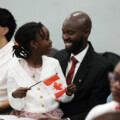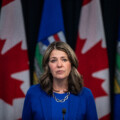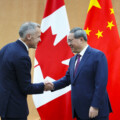The share of government transfers as a part of Canadian families’ income has more than doubled since the beginning of the century, as Canadians tell pollsters they’re anxious about their household finances and don’t feel like they’re getting ahead.
The Hub analyzed the growth of market incomes, government transfers, and the share of total income represented by government transfers between 2000 and 2022 to better understand how Canadians have fared since the start of the century.
Our analysis focuses on what Statistics Canada refers to as “economic families” to describe two or more people who live in the same dwelling and are related to each other by blood, marriage, or other official relationships.
Government transfers refer to payments to individuals and households such as the Canada Child Benefit or Old Age Security.
The following data is presented in 2022 constant dollars to enable an apples-to-apples comparison over time.
Between 2000 and 2022, median market incomes for Canadian families grew from $79,700 in 2000 to $98,500 in 2022—an increase of 23.6 percent. Growth fluctuated quite a bit over the period, with an average annual growth rate of 0.99 percent.
Over the same timeframe, median government transfers to Canadian families grew from $4,700 in 2000 to $13,700 in 2022—an increase of 191.5 percent. Government transfer payments grew on average by 7.12 percent annually.
As a result, the share of median total income for Canadian families represented by government transfers more than doubled from 5.32 percent in 2000 to 11.85 percent in 2022. In fact, the share of median total income for families derived from government transfers is up by nearly one-third since 2015 alone.
Source: Statistics Canada. Chart: Sean Speer







